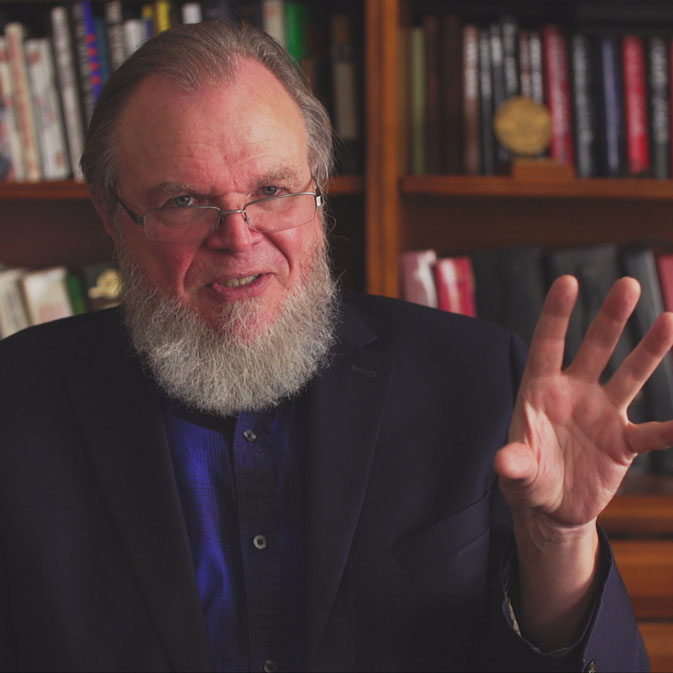How Do Strokes, Dementia Offer Insight Into How the Brain Works?
Neurologist Andrew Knox thinks the brain may store memories is an associative scheme, where previous memories are used to build up new onesIn the podcast released last Thursday, Walter Bradley Center director Robert J. Marks interviewed pediatric neurologist Dr. Andrew Knox from the University of Wisconsin School of Medicine and Public Health on “Ways the brain can break” (#220, January 5, 2023).
What follows is from Part 3 of the discussion. Here’s Part 1: How our brains are — and aren’t — like computers and Part 2: What is happening when children have strokes or dementia signs?
This portion begins at roughly 18:25 min. A partial transcript and notes, and Additional Resources follow.
The discussion began with the question, “How does the brain store memories?”
Andrew Knox: There are different schemes for storing memories, but patients with Alzheimer’s seem to have this progression where as you get further down the disease, more of their early memories seem to come back to the surface. Or it often seems like they’re convinced they’re living in the world they lived in when they were a child.
It’s made me wonder if the way the brain stores memories is an associative sort of scheme, where it uses the previous memories to build up into new memories. And then, as you have injury to the brain, perhaps you lose those most recent memories first, and then sort of go backwards through that scheme.
Robert J. Marks: Okay. So Alzheimer is a type of dementia. Do kids get Alzheimer’s?
Andrew Knox: Kids generally do not get Alzheimer’s. Many of the dementias can look similar, with different sorts of emphases. There are certain language processes that are a particular problem with Alzheimer’s. There’s another kind of dementia called frontotemporal dementia, where decision-making and controlling appropriate behaviors tends to be the bigger problem. Those, again, are all sort of adult-onset dementias.
The pediatric dementias are more specific to specific genetic disorders, and usually they have other associated symptoms, too. One example might be juvenile Huntington’s Disease.
So those children would have dementia, and along with it, they would usually have other motor disorders, too; problems like dystonia, where muscles are stiff in ways they aren’t supposed to be.
Robert J. Marks: I see. I learned a new word from our conversation before, and I practiced pronouncing it, but I’m probably going to screw it up. Paroxysmal. What is that?

Andrew Knox: That’s sort of a blanket term for any kind of problem that suddenly comes and then goes. So epilepsy or seizures would be an example of a paroxysmal disorder. Everything’s working fine, and then the seizure happens. Something’s dramatically different; it ends, and then things go back to normal.
Robert J. Marks: Another word I learned from you is syncope.
Andrew Knox: A syncope often looks like a seizure. A syncope is basically a brief loss of consciousness, which usually happens because, for one reason or another, you don’t get enough blood flow up to your head. So probably many people have had the experience of standing up, and then suddenly feeling kind of lightheaded. Maybe you see some tunnel vision, some black blurriness on the edges of your vision.
Robert J. Marks: Oh, I see little dots.
Andrew Knox: Dots can happen, too. And if that’s dramatic enough, some people may have experienced that the blackness on the edges of their vision that eventually absorbs their whole vision. And you have other strange feelings — and then suddenly you wake up on the floor, looking up at people who are wondering what just happened to you. That would be a syncopal episode, where you totally lost consciousness, because for a short period of time, you didn’t have enough blood flow to your brain…
Andrew Knox: Most people, particularly young people, don’t need to worry if they have syncope. The most common cause is because your blood pressure sits sort of low, and so then your body doesn’t compensate well when you stand up. The only problem that it really causes for you is you tend to almost pass out sometimes.
There are other patients who have what’s called a vasovagal response. That’s the sort of scenario where someone is coming at you with a needle to draw your blood, and all of a sudden you feel kind of sweaty and not so good. and then you might have a similar syncopal episode because of that response to that stimulus that you have. So those are the common causes of syncope. Those are pretty benign. They won’t cause any long-term problems.
There can be some other causes that are a little more serious. There are some kinds of heart dysfunction that can cause syncope. So there are a few rare people who have syncope who might have a more serious issue, but that is the exception rather than the rule.

Robert J. Marks: What do they call the person that takes your blood? They have a fancy word for it.
Andrew Knox: A phlebotomist.
Robert J. Marks: A phlebotomist, yes. Now, I give blood regularly. I go to functional medicine, and they take my blood all the time, and I used to be scared, and then I realized that the expectation was a heck of a lot worse than the realization, so I just swallowed, and now I look at the needle going in and going, “Oh, that’s interesting.”
But I asked these people, “Who are the people that wimp out the most?” And on more than one occasion, I think for three different phlebotomists, they said that it’s the guys that come in with big muscles and tattoos, which I thought was very interesting.
It’s kind of like they want to put up this facade of this big tough, macho guy, but they come in, and they face a needle, and they get all sweaty and stuff. So there’s something deep and psychological about that, I think.
Unfortunately, dementia — the next and final topic in this episode — is, like strokes, not “psychological.”
Next: When it’s not clear if a disorder is from the brain or the mind…
You may also wish to read: Part 1: How our brains are — and aren’t — like computers. Pediatric neurologist Andrew Knox looks at the topic with computer engineer Robert J. Marks. The conversation drifts to strokes — one of the ways that the brain can “break,” even in children.
And Part 2: What is happening when children have strokes or dementia signs? Many children who would have died 40 years ago can live a relatively full life today but they are at risk of stroke or dementia. Neuroplasticity, the ability of the brain to rewire neurons to provide lost functions to at least some extent offers hope for rehabilitation.
Additional Resources
- Robert J. Marks at Discovery.org
- Dr. Andrew Knox at University of Wisconsin School of Medicine
